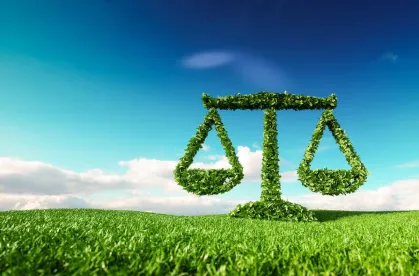The Shapiro administration recently released its Interim Final Environmental Justice Policy (“Interim Final Policy“), along with a link to the latest Environmental Justice Mapping and Screening Tool (“PennEnviroScreen”). The Interim Final Policy is due to go into effect when the final version is published in the Pennsylvania Bulletin, which is expected to take place on September 16, 2023.
Pennsylvania’s Environmental Justice Policy
The Commonwealth first adopted an Environmental Justice Policy (EJ Policy) in 2004 to provide citizens in environmental justice communities enhanced public participation opportunities during certain DEP permit application processes. In 2018, DEP circulated a draft revised policy for public comment, but ultimately withdrew the proposed revisions in 2020 following receipt of public comments. After conducting further outreach in 2021, DEP proposed an updated policy that would refine and expand the scope of the withdrawn 2018 revisions. On March 12, 2022, DEP released a draft of the EJ Policy for public comment, and subsequently received more than 1,200 comments during the comment period. The Interim Final Policy is the latest version of the EJ Policy to have been released by DEP since the comment period closed last spring.
Important Features of the Interim Final Policy
The Interim Final Policy will likely have a tangible impact on permitting and enforcement processes for various industries going forward. Below are some important provisions to be aware of:
- The Pennsylvania EJ Mapping and Screening Tool – PennEnviroScreen
The Interim Final Policy requires use of the PennEnviroScreen tool, which will replace DEP’s current EJ Areas Viewer tool. PennEnviroScreen is already live, and DEP plans to begin using the tool on September 16, 2023 to determine whether facilities are located in EJ areas based on 32 environmental, health, socioeconomic, and demographic indicators. According to DEP’s Environmental Justice Policy Revision webpage, permit applicants planning to file a permit application on or after September 16, 2023 “must use the new PennEnviroScreen tool to determine if the permit’s facility is in an environmental justice area.” A 113-page “Methodology Document,” which is intended to explain the rationale behind the PennEnviroScreen tool, is also available.Industry should be aware that DEP plans to regularly update the criteria used to evaluate areas where the Interim Final Policy applies (EJ areas). To allow for a level of certainty, however, the Interim Final Policy states that “the EJ Areas in effect at the key decision point of the project will follow that project.”
- Trigger Projects v. Opt-In Projects
DEP regulated activities that are listed as “Trigger Projects” in Appendix C automatically require application of the Interim Final Policy’s provisions. Examples in the Interim Final Policy include various mining permits (bituminous and anthracite underground and surface mines), waste permits (landfills, transfer stations, commercial incinerators), and air permits (new major source of hazardous pollutants or criteria pollutants). While the 2022 Draft Policy had classified oil and gas unconventional well permits as Trigger Projects, the Interim Final Policy does not; however, various types of unconventional oil and gas projects are listed as “Opt-In Projects.” Other Opt-In Projects include resource recovery facilities, scrap metal facilities, and “other projects as identified by the community.” After receiving a request from the community or a DEP staff member to apply the Interim Final Policy to Opt-In Projects, DEP may decide to do so using its “discretion and expertise.” - Inspections, Compliance, and Enforcement
In the event there are comparable inspection and enforcement scenarios, and DEP does not have the resources to take all the necessary actions at the same time, DEP may exercise its discretion and prioritize an EJ Area. Further, DEP plans to form an:Enforcement and Compliance Team to prioritize inspection and monitoring at sites which have multiple authorizations, multiple on record complaints, habitual violations, sites with high volume generation or unique permit conditions, EJ communities, and sites of significant geographic location and to ensure timely and appropriate responses to violations, implement an efficient criminal referral protocol, and ensure effective collaboration.
- Civil Penalties
The Interim Final Policy also indicates that DEP interprets impacts to the environment or the public health and safety at an EJ Area to be a relevant factor in the calculation of penalties for violations and may include a dollar figure in the penalty amount for such a violation “provided there is adequate evidence to support a factual finding that the violation caused harm and the penalty amount fits within the statutory limits.”
What’s Next?
The Interim Final Policy’s publication date will also be the start of a formal public comment period that will run until October 29, 2023. DEP expects to implement the Interim Final Policy starting on September 16, 2023, using it to “usher in deeper advancements for the commonwealth’s environmental justice communities and is a critical benchmark towards the final EJ Policy” which is due 2024.




 />i
/>i

